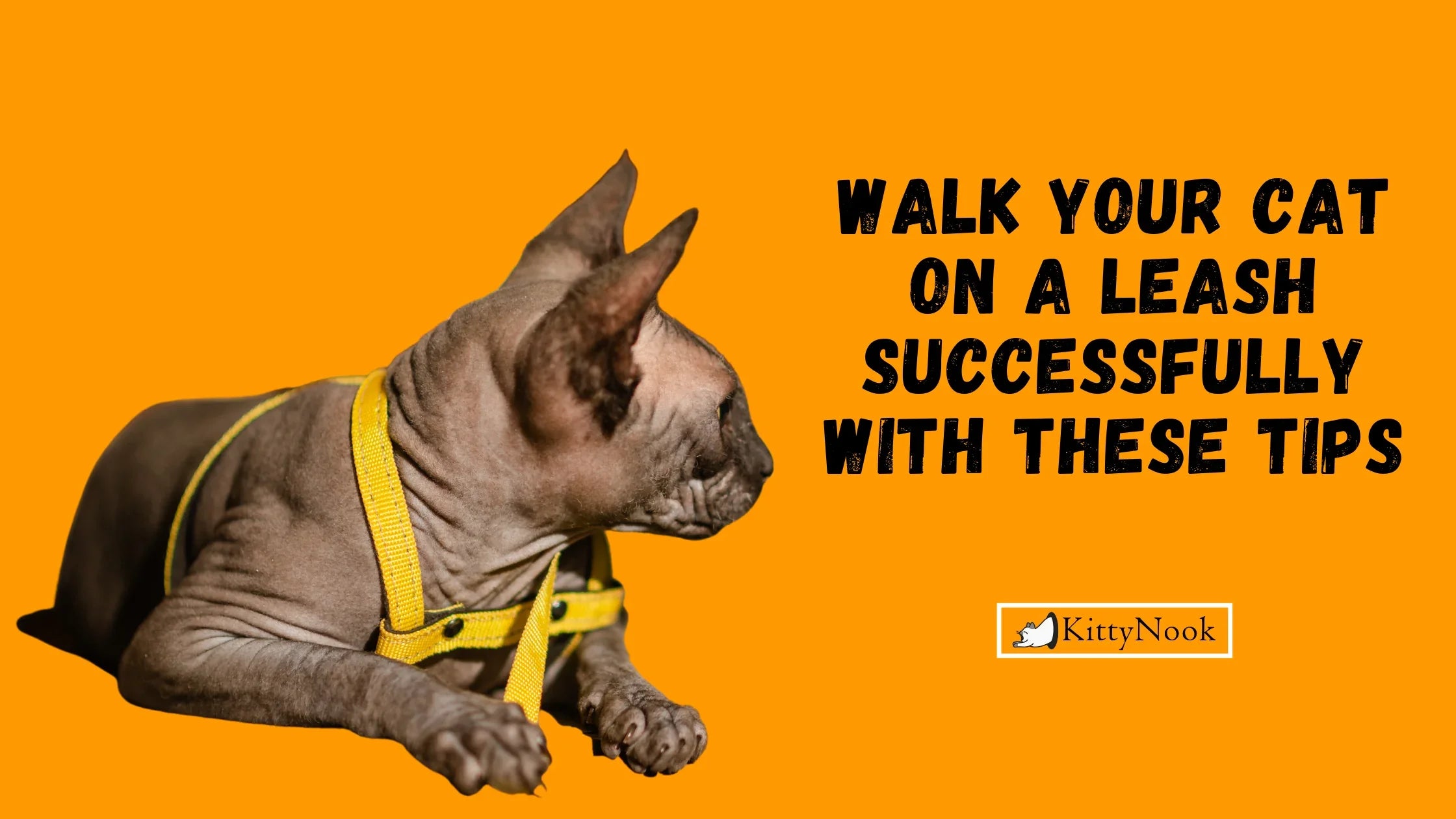Indoor cats need enrichment exercise to avoid weight gain, boredom, and the development of unwanted behaviors. Some people think that walking their cat on a leash will do this, especially since indoor cats have no access to the outdoors. There are a lot of cat harnesses and leashes that cat parents can buy, and some animal behaviorists give suggestions for leash training and walking outdoors.
Should I walk my cat? What the authorities say:

Although RSPCA policy is that a leash, as well as harness, might be used to walk cats outside the owner's residential or commercial property under strict guidance and despite some owners triumphantly training their cats to walk using leashes and harnesses, generally, the RSPCA does not recommend it. This is because going outdoors exposes felines to unknown scents that they may find threatening and possibly frightening— like dogs and strangers; or loud noises like vehicles. When surprised, cats generally try to hide somewhere or get away by climbing up whatever is height is offered, such as a tree or even up onto their owners. Generally, cats like to be in control—as a result; new atmospheres can create tension and frustration. Any quickly stressed cat is best provided with other opportunities for exercise and enrichment, such as indoor play.
The Yays and Nays of Walking A Cat

If trained correctly, a cat can be walked on a leash, opening the door to endless adventures for the cat and you. However, if you have tried to walk your cat on a leash before, you know that the training isn't so simple. Cats love the outdoors, which is why it is depressing to see your cat looking longingly at the outside.
To help, I am here to tell you some dos and don'ts of walking your feline so you can both experience a fun time.
Harness and Leash
A well-fitted harness is the first step to success.
Cats can gain or lose weight, so make sure to change the harness appropriately if your cat changes size.
Purchasing a harness and a leash that best fits your cat is the best place to start. Ensure that you can fit two fingers in between the feline and the harness to ensure it's not too restricting nor too loose. Many owners prefer lightweight harnesses with more area to disperse pressure. Collars are a no-no because cats can squirm out of them quickly.
Be extra cautious if you have an especially wriggly cat; there are reports of felines who learned how to squirm out of harnesses.
Best harness for cats
There are three main cat harness designs: vest harnesses, jacket harnesses, and H-style harnesses, which have straps that twist around the neck and midsection. Which harness is best? Veterinary behaviorists don't have a preference as long as it fits well and stays on. You'll additionally want to give some consideration to the season. An H-style harness is best in hot weather, while a vest or jacket harness is likely better in more moderate temperatures.
Getting Ready For Harness Adventures

Here are some suggestions in preparing a cat to use a harness and walk on a leash:
- Make sure your cat is updated in its vaccinations and is ready for the outdoors.
- Present your cat to the harness slowly and use treats to create positive associations. Putting the harness beside the cat's bed is an excellent way to start. Later on, put the harness on for simply a minute or two. It may take days or perhaps weeks before your cat warms up to the feeling of being restrained.
- Try the harness and leash inside the home until the cat is comfortable with leash walking. Do experiment outdoors and risk having your cat distressed.
- Practice walking in a secure area (like your fenced backyard).
- Pay attention to responses from your cat. Wearing a harness and strolling on a leash should be a fun experience, do not push your cat well way out of its comfort zone too soon. Be patient.
Based on my experiences with my harness-wearing cats, training a cat with a lightweight harness is easier than getting them accustomed to the more escape-proof items. When a cat is harness-trained, you can shift to a more secure harness if they are an escape risk.
Last Words

Unlike dogs, cats do not wish to socialize with others, but they appreciate exploring their environments. Additionally, cats do not behave the same as for dogs on a leash. Instead of responding to orders such as sit, you will follow your cat's lead as they wander about. Walks should be kept short. Instead of making use of collars and leashes to give access outdoors, the RSPCA advises providing a cat-proof space or a lawn with a cat-proof fence. This enables your cat to enjoy the outdoors in a secure and safe and setting, without the threats involved with walking your feline on a leash.
However, if you decide to walk your cat on a leash, you must connect this to a harness instead of a collar. Felines can quickly remove collars or, worse, choke if they try to get away and end up entangled. Also, an appropriate feline harness rather than a dog harness is much more comfortable and safe for cats. Ideally, walking on a leash and harness must start as a kitten. Begin inside the home, and use treats to make the cat comfortable beings restrained. Outdoor adventures ought to be limited to the security of a backyard. Public parks are unsuitable for cats.
Before being walked outdoors, cats have to be up-to-date with vaccinations versus transmittable diseases and with cat-specific treatments to protect from fleas, ticks, and worms. Additionally, they have to be identified with a microchip if they escape.




















